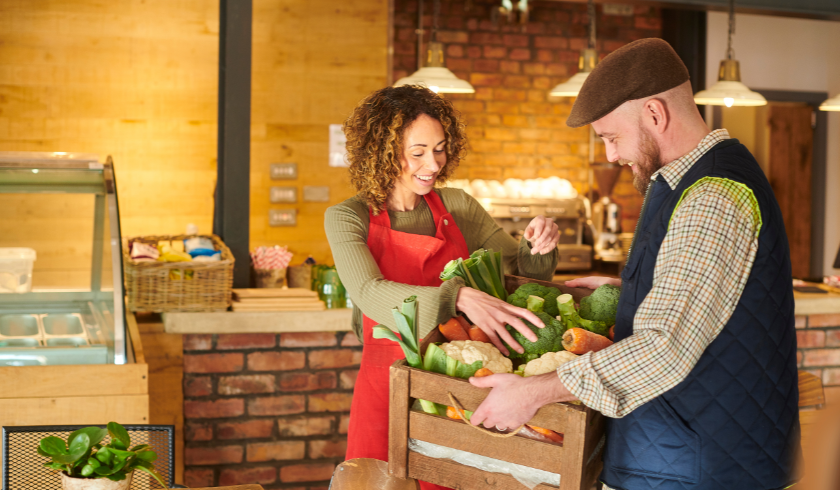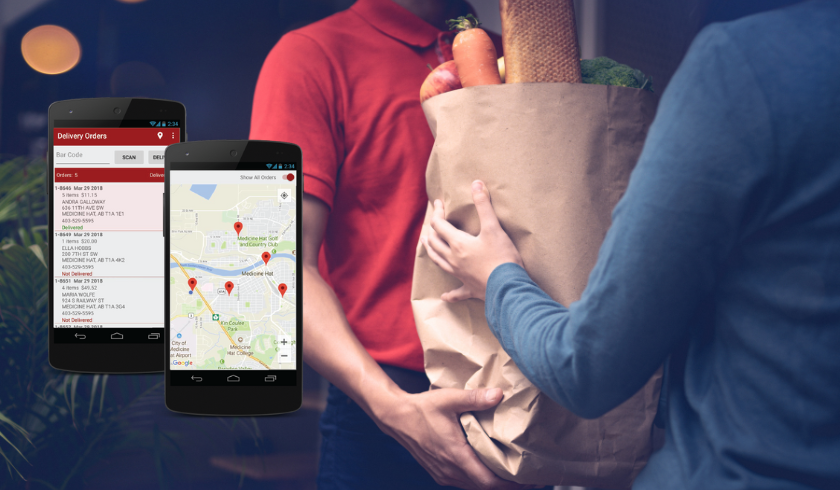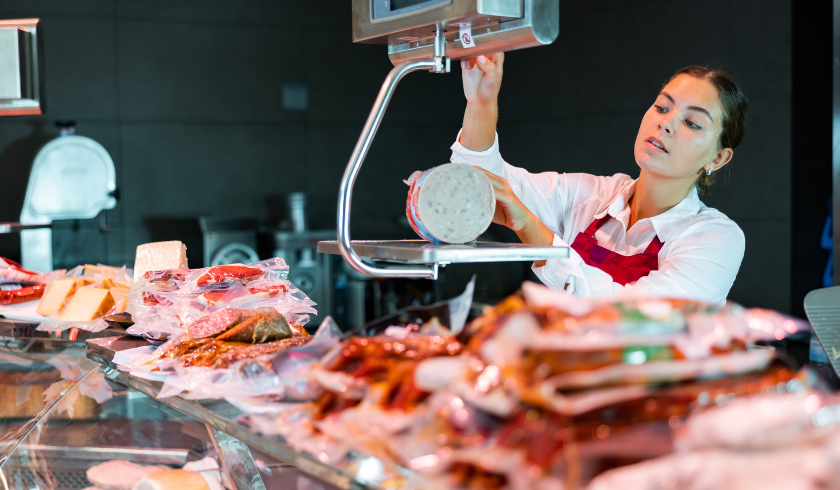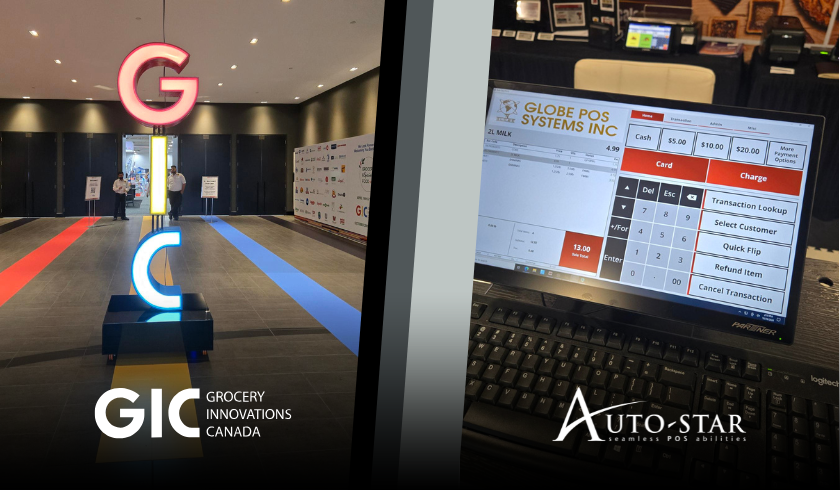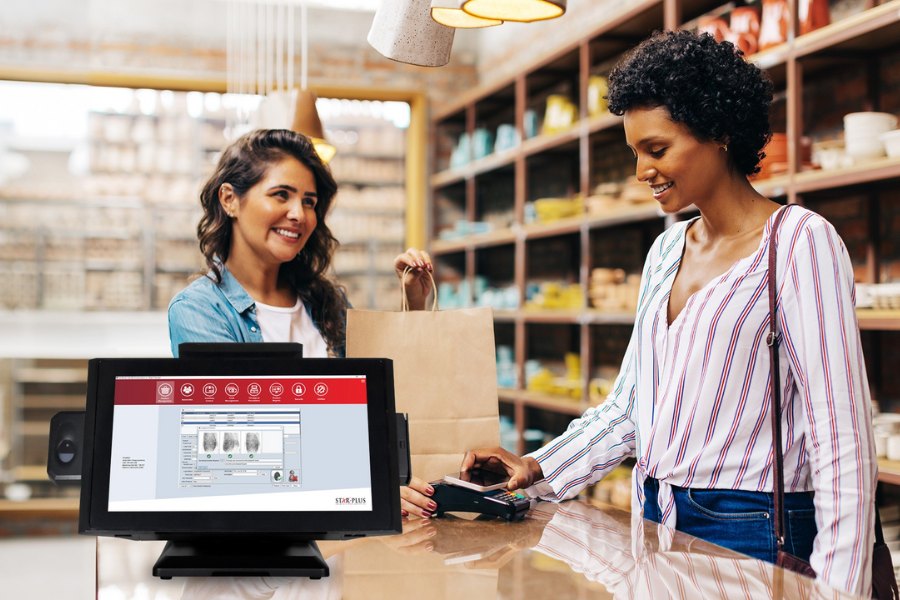You might think advances in ecommerce don’t affect your grocery store, as households will always need groceries. That may be true—but with emerging technologies and more ways than ever to complete the task, grocery retail is becoming a highly competitive space in 2020, especially for brick-and-mortar grocery stores.
The supermarket industry is rapidly changing on a large scale, and many retailers are investing in more robust omnichannel strategies. The future of brick-and-mortar grocery stores is dependent on staying on-trend, meeting growing customer expectations, and then capitalizing on these trends.
Here are 5 Grocery Store trends in 2020 you need to know:
Say No to Super-Size
The takeover of super-sized supermarkets from small mom and pop shops is coming full circle in 2020—customers want to decrease the number of super-sized stores, and see them replaced by markets with a much smaller footprint. Customers crave a more personalized and efficient shopping experience with more locally derived products that hold their interest more than big-box retailers.
More grocers are increasing the amount of private label products they offer, which are no longer viewed as the “lesser, cheaper, alternative” product, but are more preferred. Millennials are to thank for this movement, showing less brand loyalty compared to previous generations. Capitalize on this opportunity by creating private label products that carry the identity, mission, and values of your individual store—and consumers will eat it up, literally.
Grocery owners can see revenue boosting benefits of a smaller footprint, such as lowered operating costs, faster service, and the opportunity to build loyalty with a more customer-centric experience.
Experience is Everything
With increasingly busy schedules and more of the population constantly on the go, grocery shoppers want more out of their trip to the store, otherwise, why make the trip? Create a space for socialization and relaxation, combining entertainment with the idea of recreational shopping to recapture audiences back into your brick-and-mortar grocery store.
Personalization is the goal, according to a 2019 survey, 63% of consumers have come to expect personalization as a baseline of service. Engage customers with interactive digital signage showing product videos and cooking demonstrations making strolling the aisles for the essentials an inspirational experience instead of a chore. Make your store a place to gather and spend the day with built-in cafes or full restaurants, wine bars, and interactive family activities.
Convenience and Choices
Even with the advances in grocery ecommerce, only about 3% of grocery sales happen over the internet. Even so, the convenience of online shopping has changed in-store expectations—customers want convenience and more choices when they enter your grocery store.
Cater to the lifestyles of today’s busy consumer, more frequent trips are becoming the norm over the once-per-week grocery haul. Offer the option to pre-pay online and pick-up in-store or a faster checkout process with wireless handheld line busting and self-checkout. More shoppers stop on their way home from work for same-day dinner options, therefore, there is high demand for a larger variety of prepared foods that not only meet the needs of a variety of health-conscious diets, but are available at more times throughout the day, and are portion and budget friendly.
Expand the reach of your grocery store with the convenience of grocery delivery services, for the times when a trip to the store isn’t possible. Retailers like Wal-Mart expect to see delivery growth of 40% in U.S. households, so incorporating delivery makes your grocery store an obvious choice over stores that don’t offer the service.
Full Disclosure
Consumers want complete transparency when it comes to their food and grocery products. Food trends are leaning toward more sustainable agriculture with preferences for local, organically sourced produce and a demand for “clean” packaging options heavily influencing buying decisions. Telling a “food story” focused on sharing the products’ taste, uniqueness, and origin from farm to fork adds value, engages customers, and builds loyalty.
Tech Trends
Trends in 2020 have grocery stores becoming more innovative than ever. Interactive mobile apps used to engage and educate consumers by sending targeted in-store messages and tracking habits as a way to serve up coupons and promos based on buying history. Some have become so advanced that online dashboards can show you your monthly sugar intake based on the products you frequently purchase. Even more cutting-edge technology is going as far as implementing automated grocery vending machines equipped with refrigeration and pre-packaged “carts” for the ultimate convenience.
Grocery point of sale (POS) systems provide deep analytic capabilities that help grocers make better critical business decisions, integrated ecommerce ability, so you can offer subscribe and save programs and adjustable delivery options to inspire repeat business that is convenient for both the customer and the grocery store.
Stay on the edge of the competition by making sure you have the right grocery technology systems in place to streamline operations for cost-saving benefits. Providing a seamless, fast, and valuable shopping experience both in-store and online is crucial to deliver the customization and personalized experience grocery shoppers want.
Contact Auto-Star to learn more about the grocery technology systems that can improve your grocery store and help you stay on trend in 2020.
Visit us at the National Grocers Association (NGA) Show, February 23-26, 2020 at the Dan Diego Convention Center.


